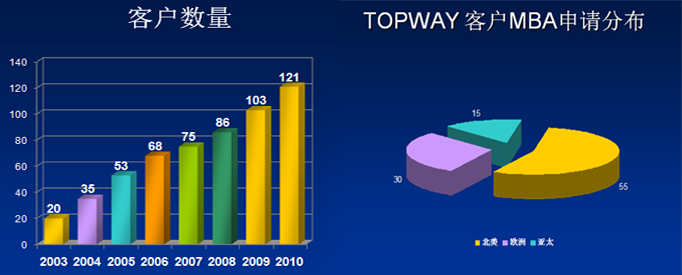|
RC-1: 墨西哥土人语言学
【版本1】第一篇是有关一个民族p, 对p为什么定义为一个族群进行了探讨。主要有人疑惑这群人说6种截然不同的语言。这群人的同类的特征并不同时发生,他们有时候这个时期一部分人有一个特征,其他人没有,但随着时间的转移,其他人会慢慢有这个特征。
相关文章, 背景知识
二、pueblo
Pueblo, name given by the Spanish to the sedentary原生的/定居的 Native Americans who lived in stone or adobe communal公有的/共用的houses in what is now the SW United States. The term pueblo is also used for the villages occupied by the Pueblo. Their prehistoric settlements, known as the Anasazi and Mogollon cultures, extended southward from S Utah and S Colorado into Arizona, New Mexico, and adjacent territory in Mexico. The transition from Archaic 古代的(see Americas, antiquity and prehistory of the) hunters and gatherers to sedentary agricultural populations occurred around the 1st cent. A.D., when corn玉米, squash,南瓜 and beans were widely adopted; the trio三个一组of foods is still used by the Pueblo. Although agriculture provided the bulk of the diet for these early populations, hunting and gathering was an important source of additional foodstuffs. Pottery陶器 manufacture began about A.D. 400 and was used for cooking and water storage. Clothing was woven from cotton, grown in warmer areas, and yucca 丝兰花fiber. Early houses among the Anasazi and Mogollon were pit地窖 houses, which were replaced by adobe and stone surface dwellings住所 throughout the region by the end of the first millennium A.D.
Villages were variable in size and architectural content, but most included circular, often subterranean structures known as kivas (apparently a derivation of the pit house) and storage pits for grains. Prior to the 14th and 15th cent., densely settled villages were more the exception than the rule. Large pueblos were found at Chaco Canyon, dating to the 11th and early 12th cent., and at Mesa Verde, where multistoried cliff houses were inhabited in the 13th and 14th cent.; a great lunar observatory was built at Chimney Rock, S Colo., in the 11th cent. Changing climatic conditions forced the abandonment of much of the region by the early 14th cent., with populations migrating to their present-day locations in the Rio Grande valley and a few other isolated areas (e.g., the Hopi mesas).
Initial contact with European populations came in the 16th cent., when Spaniards entered the Rio Grande area. The seven Zu?i towns were reported by the Franciscan Marcos de Niza to be the fabulous Seven Cities of Cibola, leading to the first intensive contacts—a Spanish exploration party under Francisco Vásquez de Coronado in 1540. Due to increasing pressure on the existing food supplies, the initially friendly Pueblo became hostile and then revolted; their resistance ended in a mass execution of Native Americans by Coronado. In 1598 Juan de O?ate began full-scale missionary work and moved the provincial headquarters of the Spanish colonial government to Santa Fe. By 1630, 60,000 Pueblo had been converted to Christianity, and 90 villages had chapels,小教堂 according to Father de Benavides.
Determined to put an end to the suffering caused by their Spanish oppressors, the Pueblo staged a successful revolt in 1680. Popé, a medicine man, led a band of Pueblo who killed 380 settlers and 31 missionaries and forced the remaining Spaniards to retreat 撤退/退却to El Paso. However, the Pueblo lost 347 of their number in one attack on Santa Fe. Fearing Spanish reprisal报复, villages were abandoned for better fortified要塞/防御 sites. In 1692 De Vargas, with the cooperation of some Pueblo leaders, reconquered the Pueblo in New Mexico. The Western Pueblo, however, including the Hopi, remained independent.
The Pueblo have the oldest settlements N of Mexico, dating back 700 years for the still-occupied Hopi, Zu?i, and Acoma pueblos. The Europeans who settled in the Southwest adopted the adobe structures and compact village plans of the Pueblo. The Pueblo, for their part, adopted many domestic animals and assorted分类 crafts from the Old World, including blacksmithing and woodworking.
Among the modern Pueblo, men are the weavers and women make pottery and assist in house construction. The status of women among both the Western and the Eastern Pueblo is high, but there are differences related to the different social systems of each. The Western Pueblo, including the Hano, Zu?i, Acoma, Laguna, and, the best known, the Hopi, have exogamous异族结婚 clans氏族 with a matrilineal母系的 emphasis and matrilocal居住在女方家 residence, and the houses and gardens are owned by women; the kachina cult emphasizes weather control, and the Pueblo who follow this cult are governed by a council of clan representatives. Among the Eastern Pueblo, there are bilateral extended families, patrilineal clans, and male-owned houses and land; warfare and hunting as well as healing治疗 and exorcism驱魔术 are more important than among the Western Pueblo.
The Spanish added new elements to the government in the form of civil officers, but the de facto事实上的,in fact government and ceremonial organization remained native. The Bureau of Indian Affairs introduced elected officials in Santa Clara, Laguna, Zu?i, and Isleta, and the Hopi have an elected council on the tribal level. The Kachina and other secret societies dealing with war, agriculture, and healing still carry out their complicated rituals and dances: for some occasions, the public is invited. In 1990 there were some 55,000 Pueblo in the United States, the largest groups being the Hopi, Zu?i, Laguna, and Acoma. | 




 ffice" />
ffice" /> 时期M动物的灭绝
时期M动物的灭绝

